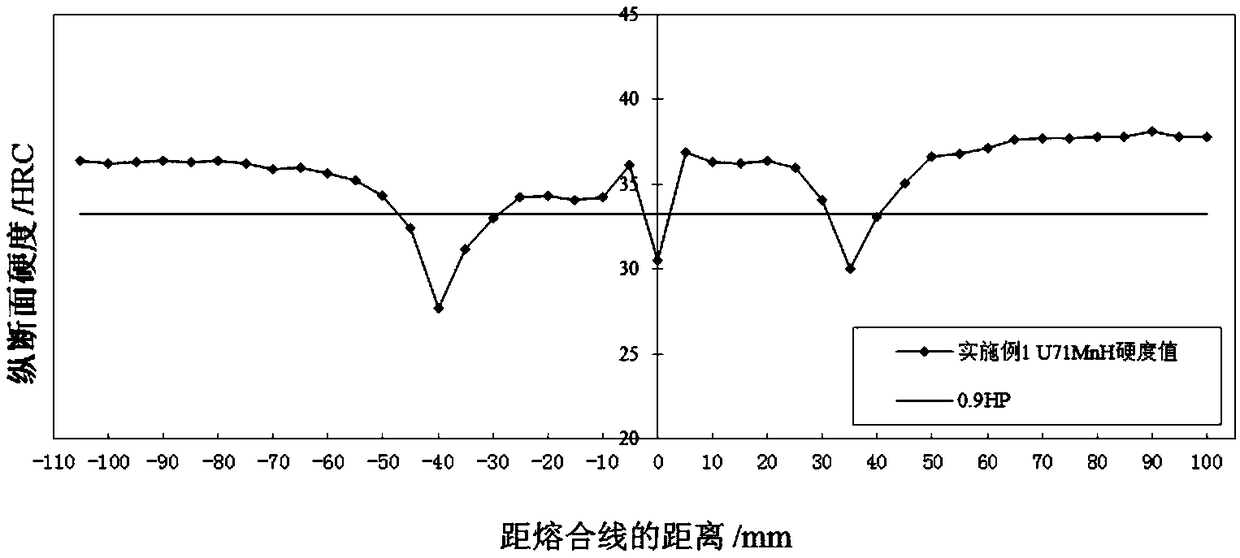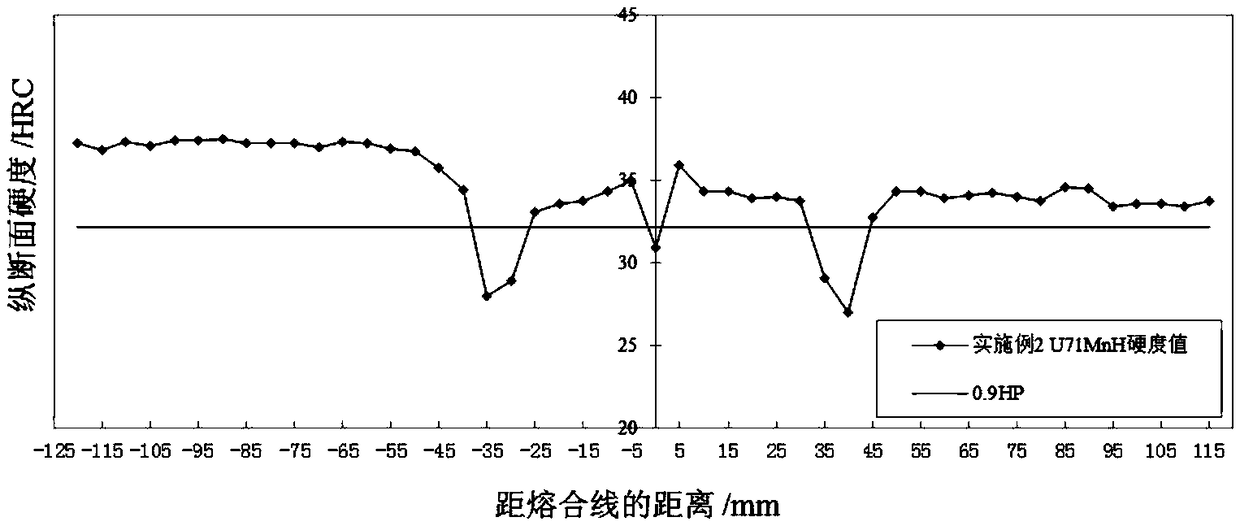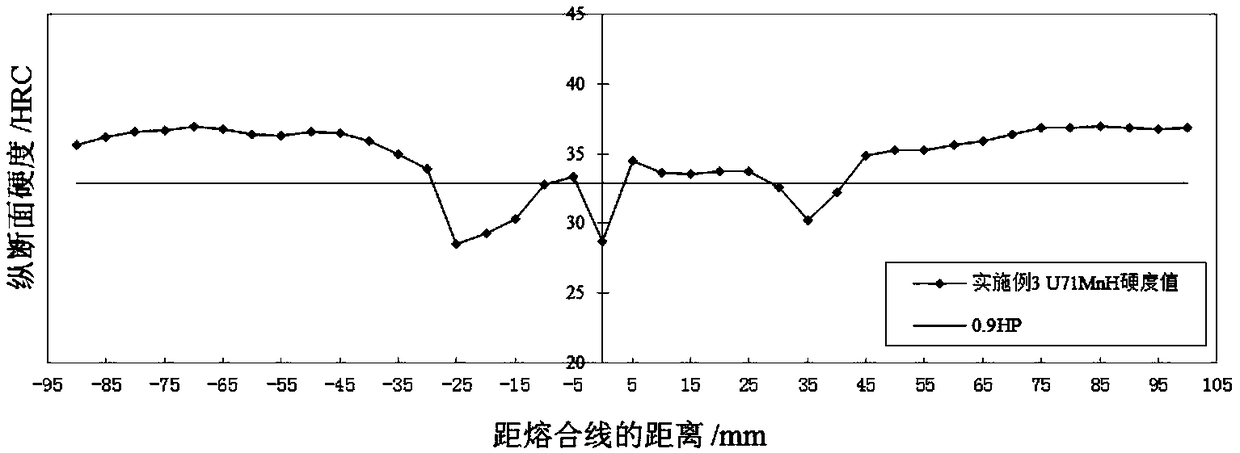Post-welding heat treatment method of U71MnH rail welded joints
A technology of post-weld heat treatment and welded joints, which is applied in the field of rail welding, can solve the problems of low hardness of welded joints, achieve the effects of improved performance status, normal microstructure, and good promotion and application prospects
- Summary
- Abstract
- Description
- Claims
- Application Information
AI Technical Summary
Problems solved by technology
Method used
Image
Examples
Embodiment 1
[0032] The welding seam area of the 60kg / m U71MnH rail welded joint was heated to 865°C by means of intermediate frequency heating, and the heating was stopped for 120s. After the heating is stopped, when the temperature of the rail joint tread drops to 735°C, carry out air spray cooling. The air spray port is 30mm away from the rail joint surface, and the spray air pressure is 0.2±0.05MPa. When the joint tread temperature drops to the final cooling temperature of At 458°C, the blast cooling was stopped, and then the rail joints were naturally cooled to room temperature. Referring to the requirements of the TB / T 1632.2-2014 standard, the HR-150A Rockwell hardness tester is used to test the Rockwell hardness of 5 mm below the tread of the rail head on the longitudinal section. In this embodiment, the ratio of the average hardness HJ of the post-weld heat treatment joint of 60kg / m U71MnH rail to the average hardness HP of the base metal is 0.92, and the ratio of the average ha...
Embodiment 2
[0034] The welding seam area of the 60kg / m U71MnH rail welded joint was heated to 925°C by intermediate frequency heating method, and the heating time was 135s. After the heating is stopped, when the temperature of the rail joint tread drops to 730°C, spray air to cool it. The air spray port is 30mm away from the rail joint surface, and the spray air pressure is 0.2±0.05MPa. When the joint tread temperature drops to the final cooling temperature of At 458°C, the blast cooling was stopped, and then the rail joints were naturally cooled to room temperature. Referring to the requirements of the TB / T 1632.2-2014 standard, the HR-150A Rockwell hardness tester is used to test the Rockwell hardness of 5 mm below the tread of the rail head on the longitudinal section. In this embodiment, the ratio of the average hardness HJ of the post-weld heat treatment joint of 60kg / m U71MnH rail to the average hardness HP of the base metal is 0.93, and the ratio of the average hardness HJ1 of th...
Embodiment 3
[0036] Use the oxyacetylene flame heating method to heat the weld seam area of the 60kg / m U71MnH rail welding joint to 882°C and stop heating. The oxygen pressure is 0.6MPa and the flow rate is 4.8m 3 / h, the pressure of acetylene is 0.2MPa, the flow rate is 4.0m 3 / h, the heating time is 210s. After the heating is stopped, when the temperature of the rail joint tread drops to 730°C, spray air to cool it. The air spray port is 30mm away from the rail joint surface, and the spray air pressure is 0.2±0.05MPa. When the joint tread temperature drops to the final cooling temperature of At 462°C, the blast cooling was stopped, and then the rail joints were naturally cooled to room temperature. Referring to the requirements of the TB / T 1632.2-2014 standard, the HR-150A Rockwell hardness tester is used to test the Rockwell hardness of 5 mm below the tread of the rail head on the longitudinal section. In this embodiment, the ratio of the average hardness HJ of the post-weld heat tr...
PUM
 Login to View More
Login to View More Abstract
Description
Claims
Application Information
 Login to View More
Login to View More - R&D
- Intellectual Property
- Life Sciences
- Materials
- Tech Scout
- Unparalleled Data Quality
- Higher Quality Content
- 60% Fewer Hallucinations
Browse by: Latest US Patents, China's latest patents, Technical Efficacy Thesaurus, Application Domain, Technology Topic, Popular Technical Reports.
© 2025 PatSnap. All rights reserved.Legal|Privacy policy|Modern Slavery Act Transparency Statement|Sitemap|About US| Contact US: help@patsnap.com



